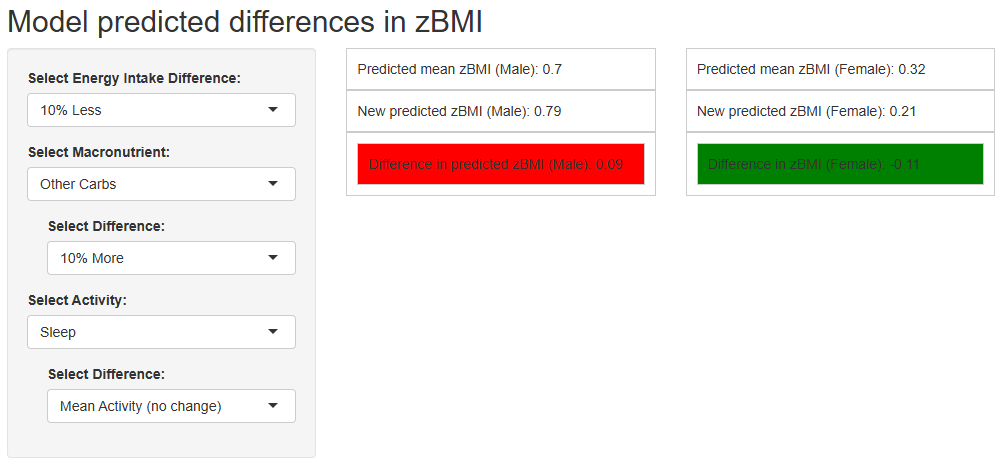Obesity 2
Session: Obesity 2
281 - An Interactive App to Explore the Relationships of Diet, Activity and Sleep Behaviors with Body Mass Index among Children from the US Affiliated Pacific.
Sunday, April 27, 2025
8:30am - 10:45am HST
Publication Number: 281.3874
Dorothea Dumuid, University of South Australia, Ironbank, South Australia, Australia; Ashley B. Yamanaka, University of Hawaii at Manoa, Honolulu, HI, United States; Kar Hau Chong, University of Wollongong, Wollongong, New South Wales, Australia; Anthony Okely, University of Wollongong, Wollongong, New South Wales, Australia; Lynne L.. Wilkens, University of Hawaii Cancer Center, Honolulu, HI, United States; Yurii B. Shvetsov, University of Hawaii Cancer Center, Honolulu, HI, United States; Chloe Lozano, University of Hawaii Cancer Center, Kailua, HI, United States; Rachel Novotny, University of Hawaii, Honolulu, HI, United States

Dorothea Dumuid, Bach Physio (Hons), PhD (she/her/hers)
Professor of Behavioural Epidemiology
University of South Australia
Ironbank, South Australia, Australia
Presenting Author(s)
Background: The integrated relationships of diet (energy from macronutrients) and 24-hour activity (physical activity, sedentary behavior and sleep) with adiposity have rarely been explored.
Objective: To determine the associations of diet and activity with body mass index z-score (zBMI) among children from the US Affiliated Pacific, who are among those at highest risk of obesity globally.
Design/Methods: Cross-sectional data from 674 children aged 6-8 years (50% girls) were drawn from the Children’s Healthy Living Program. Dietary intake (total energy intake and %energy from saturated fat, unsaturated fat, protein, added sugar and other carbohydrates) was obtained from 2 days of caregiver-completed food records, and 24-h activity (moderate-to-vigorous physical activity [MVPA], light physical activity, sedentary time and sleep) was derived from 5 days of wrist-worn accelerometry. Anthropometrics were directly measured. Multilevel compositional regression accounting for clustering (communities within jurisdictions) and adjusting for covariates of age, sex, parental education, and indigenous status was used. Total energy intake, the macronutrient composition and 24-h activity behaviors were the independent variables, and zBMI was the dependent variable. Interactions between behaviors were retained if statistically significant (p < 0.05). Regression coefficients were interpreted using an interactive online app accessible via weblink.
Results: There was a significant interaction between total energy intake, macronutrient composition, and sex (F[4,428]=3.3, p=0.01). 24-h activity composition was significantly associated with zBMI (F[3,395]=4.6, p=0.003). Effect sizes for dietary behaviors appeared larger among girls than boys. Compared to the sample mean, 10% lower total energy intake combined with 10% more %carbohydrates (excluding added sugars) was associated with -0.11 zBMI in girls. Alternatively, 10% more total energy intake combined with 10% more %unsaturated fats was associated with +0.11 zBMI in girls. In both sexes 10% more sleep and 10% more MVPA was associated with lower zBMI (-0.08 and -0.05, respectively), while 10% more light physical activity was associated with +0.10 zBMI. Expected responses in zBMI for other behavioral combinations can be explored using the interactive app.
Conclusion(s): The relationships between macronutrient composition and zBMI vary by the total amount of energy consumed and differ between boys and girls. For all children, the prioritization of sleep and MVPA above other activity behaviors has beneficial associations.
Interactive App Interface
 The app is accessible via a weblink. Users can select different combinations of diet and activity behaviors, and see how these combinations are expected to impact model-predicted body mass index z-score (zBMI) for boys and girls.
The app is accessible via a weblink. Users can select different combinations of diet and activity behaviors, and see how these combinations are expected to impact model-predicted body mass index z-score (zBMI) for boys and girls.
